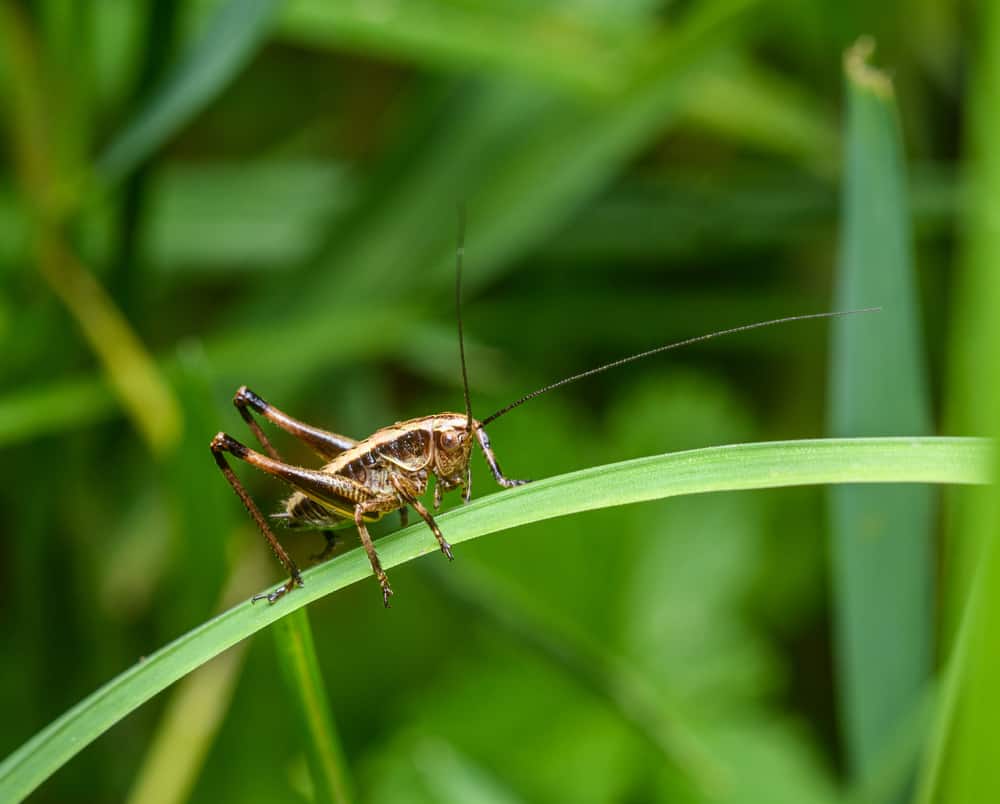Crickets are one of the creepiest-looking insects. They grow up to 2 inches long and have long antennae sticking out of their heads.
But that’s not all.
These nocturnal insects love to thrive in any environment. They are commonly found giving free late-night concerts in the gardens and fields. But when they come across heavy outdoor lighting, they definitely don’t hesitate to get inside the house!
So, if you’ve spotted a cricket sitting on your window sill or kitchen cabinet, the grotesque appearance might have one question on repeat in your head. Do crickets bite?!
Well, don’t panic because we have got your answer. Just sit far away from the cricket and give this article a quick read to get out of this situation as fast as possible!
Do Crickets Bite Humans?
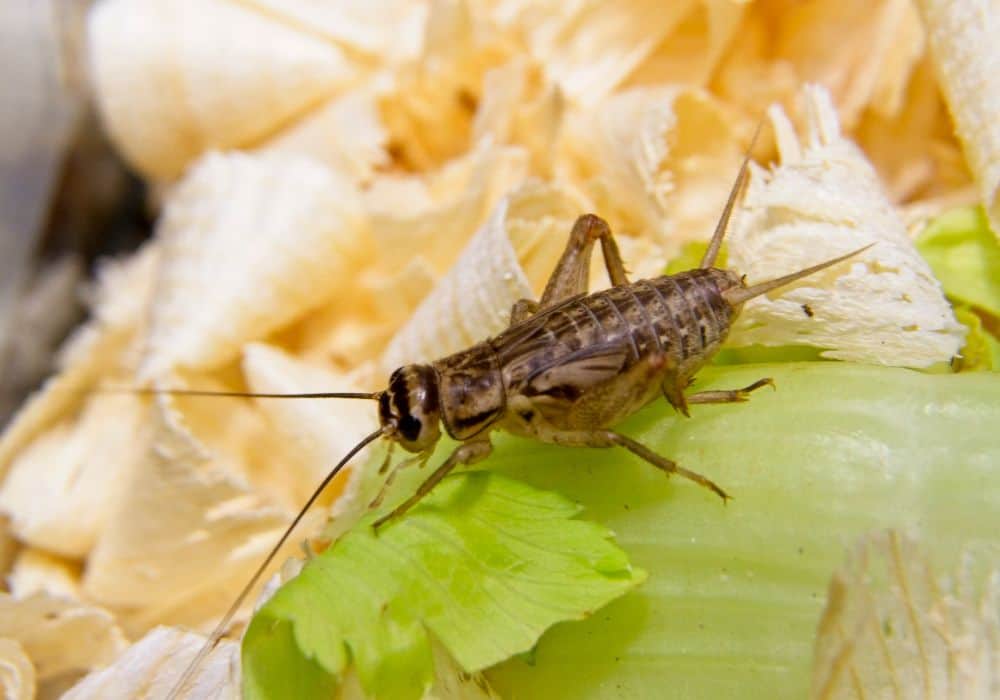
No, crickets do not typically bite humans. Crickets are primarily herbivorous insects. This means that they feed on plant matter and are not equipped with specialized mouthparts designed for biting or piercing human skin.
Their mandibles are only adapted for chewing plant material. Other than that, you may find them nibbling on fabric, wood, cardboard, and plastic sheets. But they can’t bite through human or animal skin.
In rare cases, some cricket species might exhibit more aggressive behavior if provoked or mishandled. They might scratch your skin or bite (if the cricket is big enough and has a powerful jaw). But such occurrences are infrequent and not a standard part of cricket behavior.
Species That Can Bite Human
There are more than 2,400 cricket species around the world. However, there are only 2 types with jaws powerful enough to bite a human if provoked:
- House Crickets
As the name suggests, house crickets are the ones that get into your house. They have a brown or gray body with black legs. But they aren’t very big. The largest house cricket would be 18mm, which is about 0.7 inches.
Since these crickets dwell around urban places, they are omnivorous with an appetite for small insects and dead large animals. Their jaws can bite through the skin. So, if you provoke a house cricket by catching it in your fist, it might bite you.
- Field Crickets
Field crickets are found in fields, lawns, bushes, pastures, and any greenery-filled place.
These crickets are omnivorous. But most species prefer to eat fruit, seeds, and flowers over insects. So, depending on what specie you come across, a field cricket may or may not bite you.
Currently, only Jamaican field crickets and Crazy Red crickets are known to bite humans. A Black Field cricket will only scratch your skin but won’t do any other damage.
Please note some cricket species may look dangerous, but their jaws are so weak that they won’t even try biting you. These include camel crickets, cave crickets, Jerusalem crickets, and spider crickets.
Do Crickets Bite Hurt?
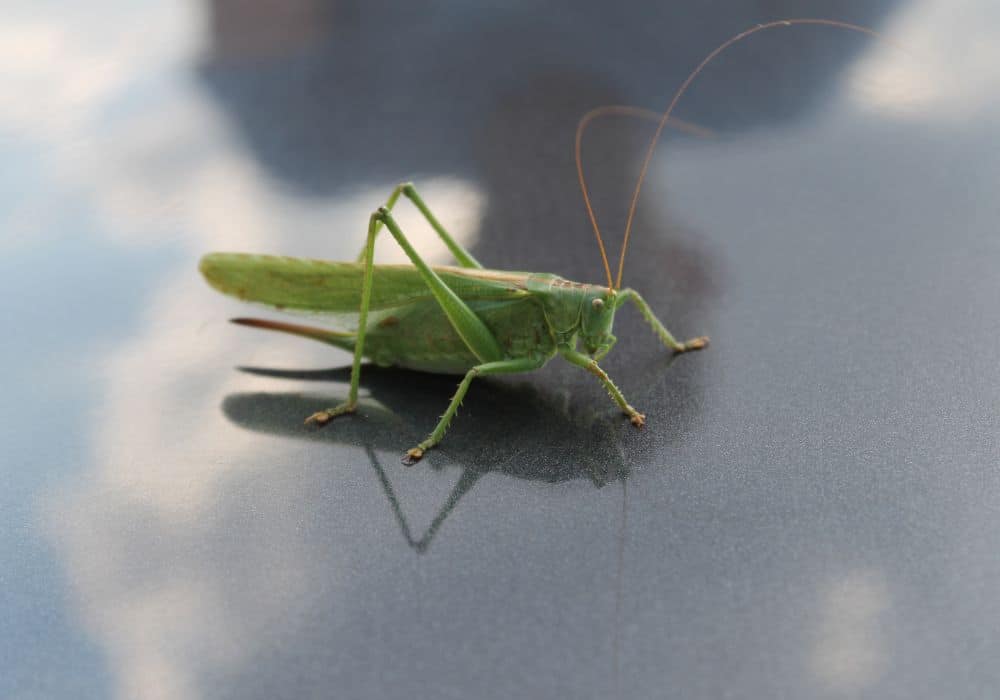
By now, we know two important things about cricket bites:
- Most crickets don’t have powerful jaw and teeth to bite human skin.
- Some crickets will try to bite humans as a way of self-defense.
So, if you throw things at a resting cricket or grab it with your bare hands, chances are the cricket will attack you to protect itself. This is especially true for male crickets. They are more aggressive and stronger than females.
The good news is that only a house cricket, Jamaican cricket, and Crazy Red cricket will manage to actually bite your skin (which is very rare). Their bite will feel like a sharp pinch, and the pain will fade after a couple of minutes.
If a Black field cricket or any other cricket type attacks you, it will only leave a scratch on your skin. This will feel like a simple paper cut.
So, there’s really nothing to worry about cricket bites. Just sanitize the area with anti-bacterial soap or alcoholic swap to kill any germs. Don’t scratch the skin, as it can open the wound.
But if you don’t do any of this, the bitten area will start to swell and develop painful sores. That’s when the real trouble will start.
What Does a Cricket Bite Look Like?
If you’re unfortunate enough to get bitten by a cricket, the bite will have no mark. This is because a cricket’s teeth are very small and will only penetrate the topmost layer of the skin.
You might develop a small bump and redness, like mosquito bites. But other than that, there will be nothing.
Here’s a picture to help you get the idea:
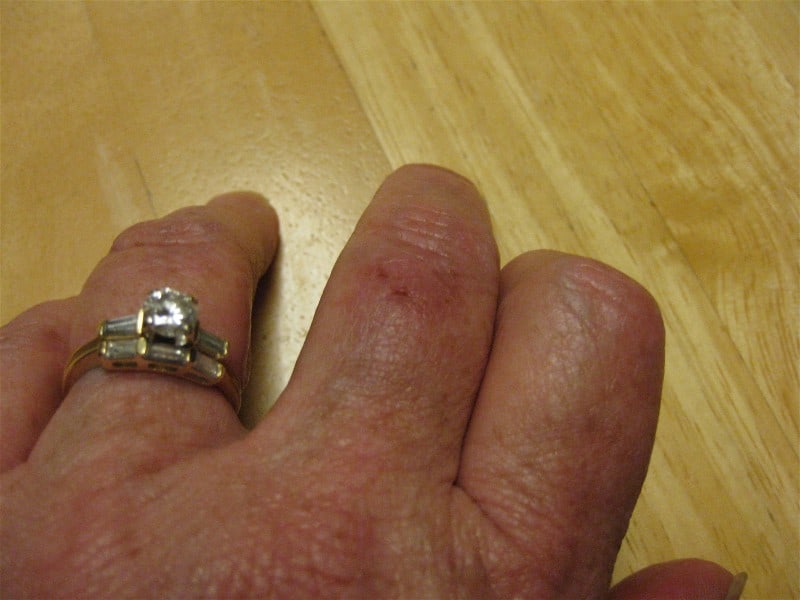
Image Credit: geckotime
Please note crickets don’t have any stingers. You will notice elongated organs at the back of female crickets. They are ovipositors for laying eggs in the ground. Usually, a female will look for a damp substrate (plant stems or soil) and then insert her ovipositor to deposit the eggs.
What Happens If a Cricket Bites You?
As mentioned, cricket bites aren’t painful or harmful. These insects may be creepy-looking, but they can’t do any damage to human skin.
The most a cricket can do is scratch your skin or bite into the top-most skin layer. If you sanitize the bitten area and avoid scratching, everything will be good.
But if you don’t follow these simple instructions, you can get a bacterial infection!
The most common types of bacteria found in crickets are E. Coli and Salmonella. Both of these mimic flu-like symptoms. So, it will be hard to tell whether you have developed an infection from the cricket bite or not.
Your only immediate indicators will be inflammation and skin rash in the bitten area. You may also develop painful sores.
Please note E. Coli and Salmonella aren’t the only infections. A cricket may also carry several other types of pathogens, which can wreak havoc in the human body. So, if you start feeling nauseous or dizzy after a cricket bite, contact a healthcare professional immediately.
How to Get Rid of Crickets Fast?
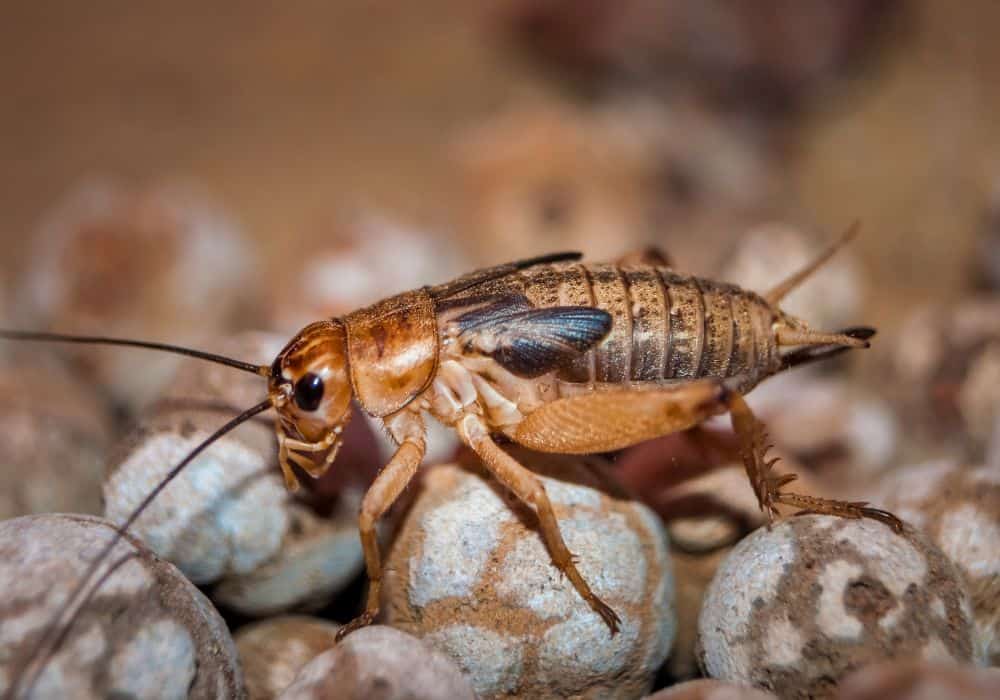
Now that we have discussed everything related to cricket bites. You must be wondering how exactly are you supposed to get rid of that cricket in your house if you can’t grab it. Well, here are some safer and far more effective ways to get rid of cricket fast:
1. Plastic Jar Trap
If a single cricket is sitting on a flat surface (horizontal or vertical), the best way to get it out is to use a plastic jar trap. Simply, find a plastic jar with an opening large enough to trap the cricket and remove its lid.
Now, find a thick cardboard piece. Hold this cardboard piece in one hand and the open jar in the other. Approach the cricket slowly, and when you’re close enough, quickly place the open jar on top of the cricket.
Make sure to place the jar firmly against the flat surface. Otherwise, the cricket will escape and attack you. Once the cricket moves inside the jar, slip the cardboard piece between the jar and the flat surface. Go outside and release the cricket in the open.
2. Molasses Trap
If the cricket is not blocking your path or you don’t want to risk your safety with a plastic jar trap, try a molasses trap. This is a bait trap that will take some time but will work effectively.
To make this, you will need a shallow bowl, water, and molasses. You can easily find it in a supermarket or online baking store. But if you can’t order it, here’s how to make molasses at home:
Once molasses is prepared, mix 1 part of it in 10 parts of warm water. Pour this mixture into the shallow bowl and leave it near the cricket. The sweet scent will attract the cricket, and it will jump inside to have a drink.
But since the mixture will be sticky, the cricket won’t be able to get out. You can grab this opportunity to pick the bowl and throw it outside. Or spray lots of insecticide to kill it on the spot.
3. Insecticide Spray
This is a risky option because of 2 reasons;
- The insecticide may not be strong enough to kill the cricket on the spot.
- If you don’t hit the cricket, the spray will startle it and make it jump toward you (most crickets jump at the threat for self-defense).
So, we only recommend this if you are sure that the insecticide is a powerful one and your aims are accurate. Just find a good insecticide spray and spray it generously over the cricket. You can also use this to get rid of a larger cricket infestation if it’s in the garage or shed.
Before you go, cover the whole body and head. Wear gloves, goggles, and a mask for further protection.
However, if the cricket infestation is in your house, we 100% suggest calling a professional pest control company. They will also help you get rid of any other pests like lizards and mice.
In a Nutshell: Do Crickets Bite?
Crickets usually don’t have jaws strong enough to bite human or animal skin. Only a house cricket, red cricket, and field cricket can do that. But even they won’t do it until you intentionally disturb and harm them.
So, you can rest assured that encountering a cricket in your garden or even inside your house is generally harmless, and they are more interested in their plant-based meals and melodious chirping than biting you – unless you provoke them!
